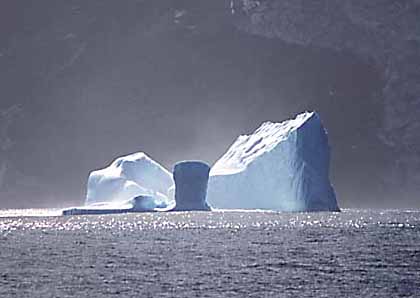The volume of Arctic sea ice increased significantly over the course of 2013, new measurements of ice depth have indicated.
Previously, the varying surface area of the ice had been studied in great detail, with a general downward trend evident since measurements began.
However, by using Cryosat - a European Space Agency radar satellite - Rachel Tilling and her team from University College London have now also been able to measure the depth of the ice as well,which reveals a twist to the trend.
Alongside ice extent, ice depth is critical because the thickness can vary from a few centimetres in some places to 5 metres or more in others. So mapping only the surface area of the ice does not show the full picture.
The satellite uses radio waves to scan the Arctic region and calculates ice depth from reflected signals. Both the surface of the ice and the surrounding ocean generate strong reflections, meaning that the elevation of the ice surface can determined. By then using buoyancy calculations - because the ice is floating on the water - the depth of ice can be deduced.
Once the scientists had verified that this technique worked, they were able to combine their measurements with those of sea ice extent to calculate the volume of ice that must be present.
Cryosat itself was launched in 2010, and so only limited data are available so far. However, the 5 years that have been catalogued to date have provided some surprising results.
Writing in Nature Geoscience, the researchers measured the ice volume at the end of each summer, the period over which ice can melt. Between 2010 and 2012 the total volume decreased by about 14%, roughly as expected. However, in 2013, the volume increased by 41%.
Looking for an explanation for this apparent anomaly, the team noticed that there were 5% fewer days of melting over the summer of 2013 compared with what's average. That is, 5% fewer days on which the temperature rose sufficiently to cause ice to melt.
The dramatic apparent jump in volume therefore seems to be caused by a small drop in the number of days of melting. This suggests that the sea ice could be more resilient than originally thought, and more able to recover any losses it sustains.
However, there is not sufficient evidence to suggest that this is anything but an anomaly in the overall trend of decreasing sea ice volumes. Indeed, it is yet to be seen whether a similar sized increase in the number of days of melting could have the opposite effect and cause a rapid drop in ice volume.
In order to determine long-term trends, several more years of data will be required. Then, a broader picture will be visible, and will put the seemingly anomalous year of 2013 into perspective.
Data from the project will also be useful in improving our current models of climate change, as many of these have not previously taken ice depth into account. This will hopefully lead to better predictions of what the future may hold for the Arctic and elsewhere...










Comments
Add a comment